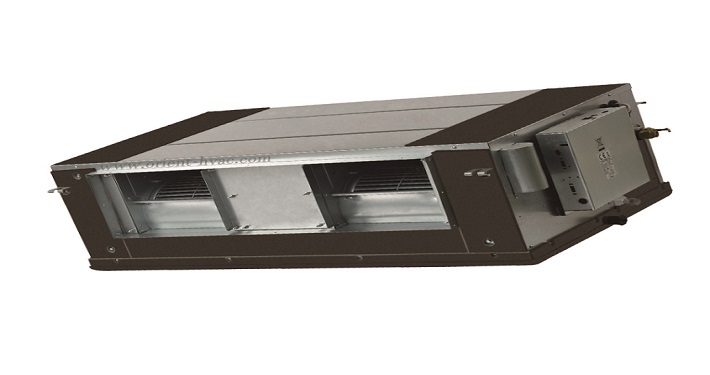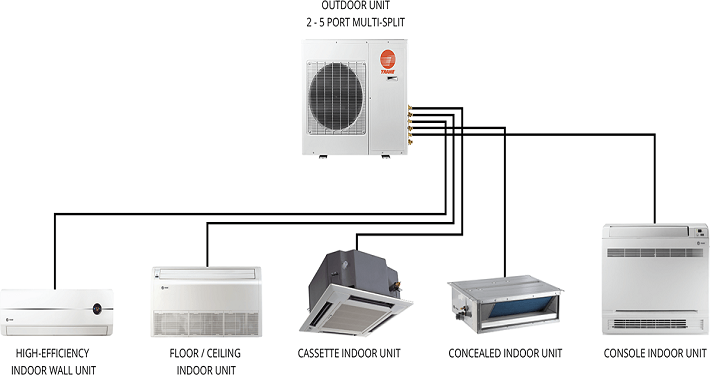Split Unit
Coolers operate according to the compression refrigeration cycle. In this cycle the heat is taken from the cold source and excreted in the hot source. According to the second law of thermodynamics, this does not occur naturally and requires physical work to do so
Inside the external unit, called unit condensing, is a gas compressor, a condenser, and a cooling fan.The compressor absorbs and compresses the low temperature low pressure gas from the evaporator. As the gas condenses, its temperature and pressure increase. This gas is sent to the condenser to lower the temperature. As the hot gas passes through the condenser coils and the air passes through the pipes rapidly through the fan, this high-pressure gas becomes a high-pressure, relatively hot liquid. As this fluid passes through the capillary tube, pressure and temperature drop sharply and become a low temperature low pressure fluid. This low-pressure liquid passes through the evaporator coils and, due to its low boiling point, rapidly absorbs the ambient heat and becomes a low-pressure gas. This low pressure gas is returned to the compressor to continue the cycle
Split units operate according to the compression refrigeration cycle. In this cycle the heat is taken from the cold source and excreted in the hot source. According to the second law of thermodynamics, this does not occur naturally and must be performed physically.
Inside the unit’s external unit, called unit condensing, is a gas compressor, a condenser, and a cooling fan that functions like a refrigerator. The compressor absorbs and compresses the low temperature low pressure gas from the evaporator. As the gas condenses, its temperature and pressure increase. This gas is sent to the condenser to lower the temperature. As the hot gas passes through the condenser coils and the air passes through the pipes rapidly through the fan, this high-pressure gas becomes a high-pressure, relatively hot liquid. As this fluid passes through the capillary tube, pressure and temperature drop sharply and become a low temperature low pressure fluid. This low-pressure liquid passes through the evaporator coils and, due to its low boiling point, rapidly absorbs the ambient heat and becomes a low-pressure gas. This low pressure gas is returned to the compressor to continue the cycle
Energy Saving by Split Unit with Inverter
The next generation of air conditioners are inverters that are of two types
control system with DC but their motor/compressor is AC
The control system and DC motor work
In fact, the inverter changes the speed of the compressor motor by using two voltage and frequency parameters. In the old system, the compressor requires a very high amperage when the starter starts, and after the starter, it needs about less amp to reach the temperature set in the cooler thermostat, and when the temperature is between 0 and 2 ° C. The degree of increase or decrease in heating starts the compressor on its own and continues operating until it reaches the optimum temperature, but due to the high power consumption and damping in the initial starter the energy consumption will increase dramatically while maintaining a constant temperature at the set point. The result is a continuous and constant impact on the motor and the wiring and power supply, but the direct current inverter units include a frequency-variable drive that can control the start-up and continuity of the compressor’s electromotor (ie, cooling / heating capacity) in a way that The compressor starts up slowly and slows down as it approaches the set temperature to avoid the need for continuous start and stop. A micro controller continually samples the ambient temperature and controls the speed of the compressor motor, and the system is rarely switched on and off so that no initial power is needed. This saves electricity and extends the life of the device. But it should be kept in mind that when the air temperature is too low or too high for use in the heating or cooling structure, both the old system and the inverter operate at maximum speed and in practice do not differ in energy consumption








